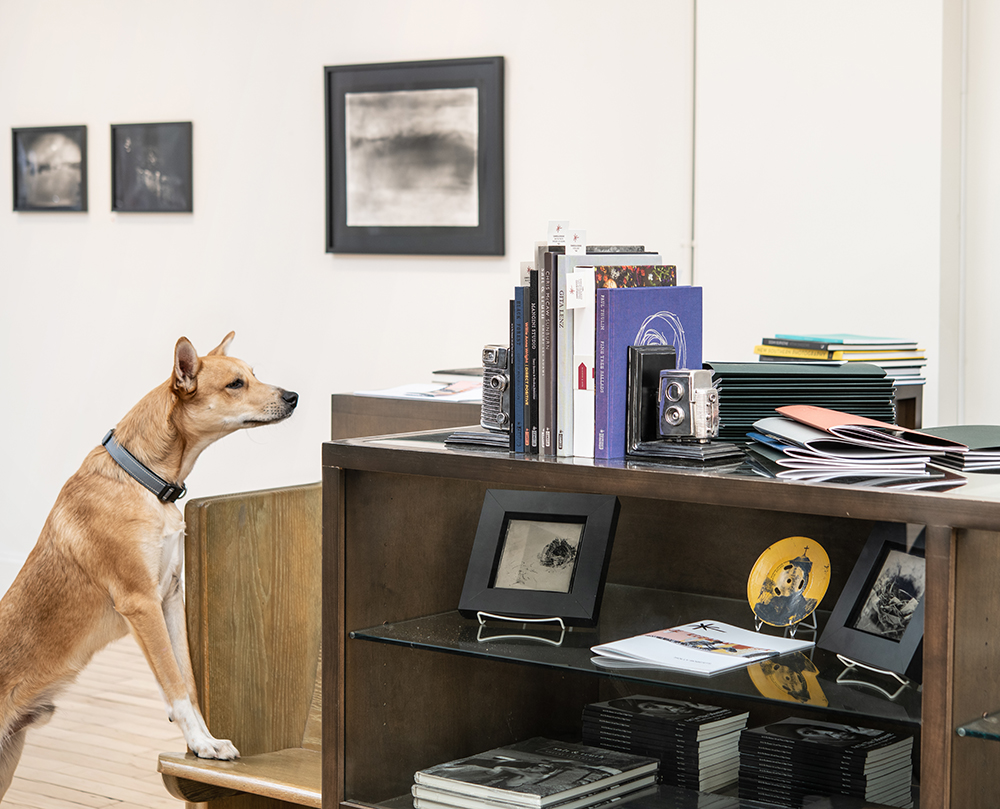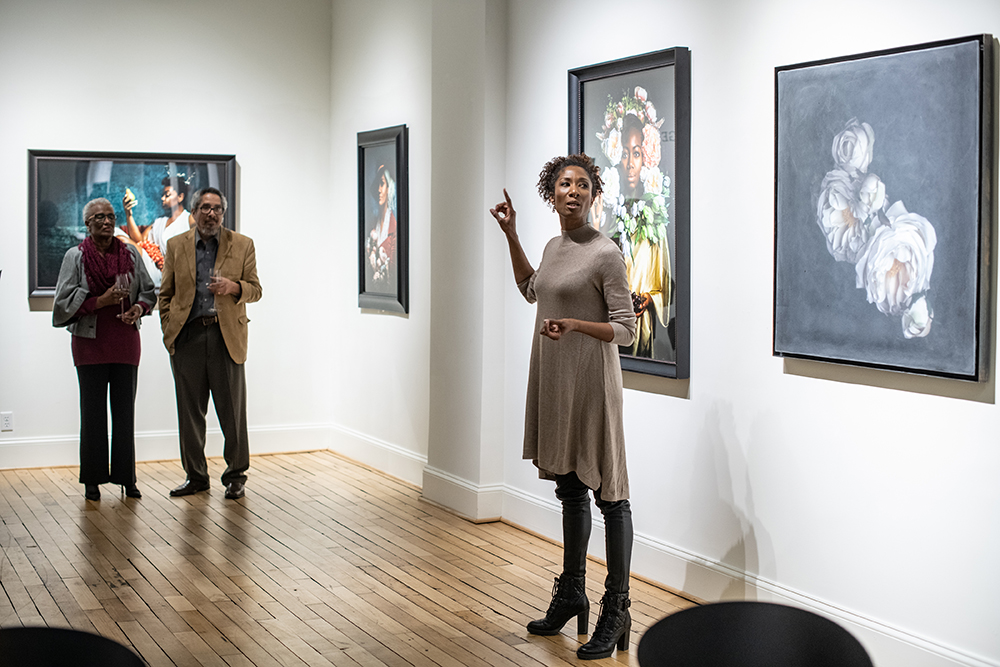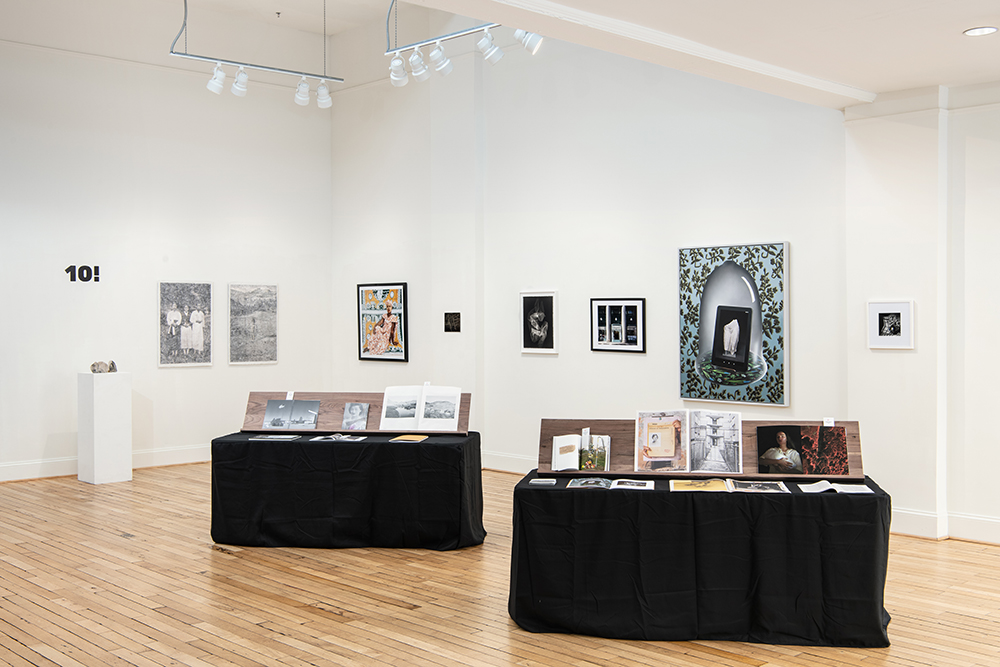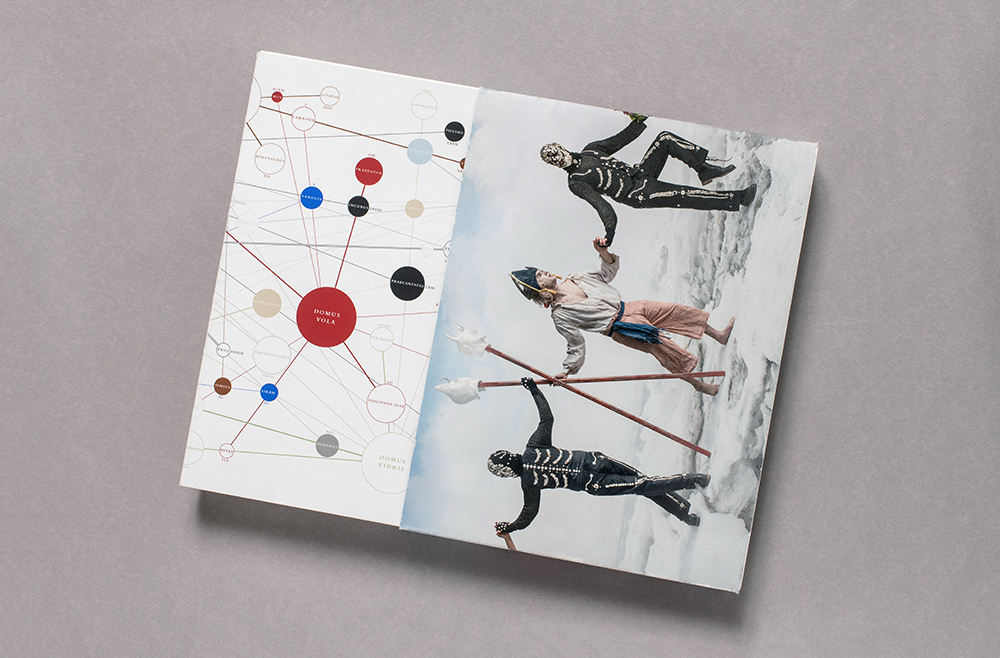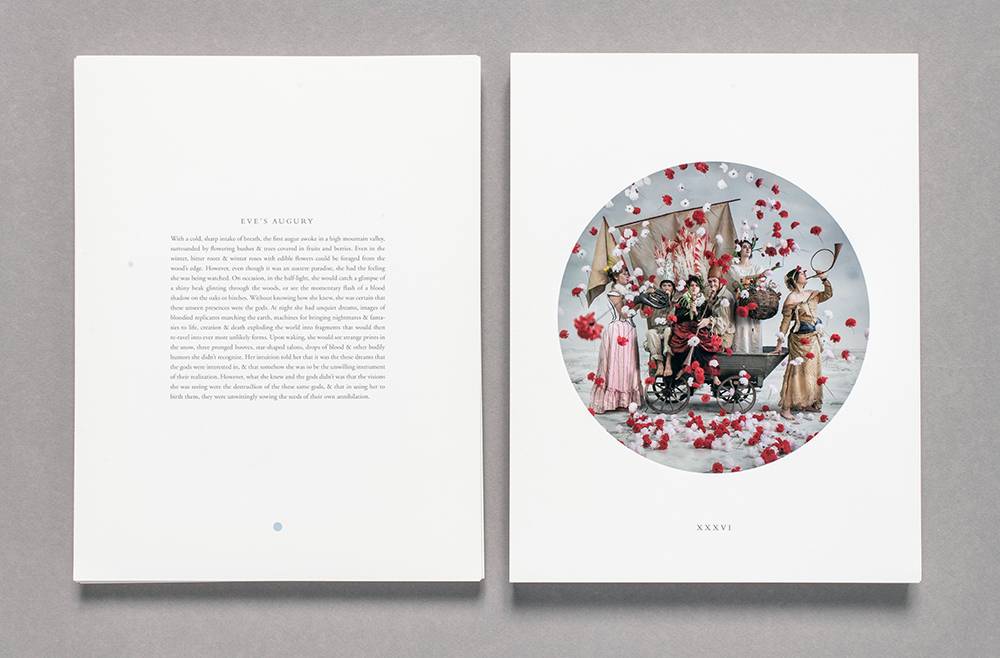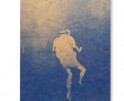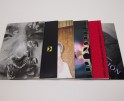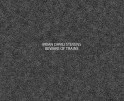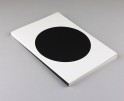Publisher’s Spotlight: Candela Books
This month is all about books on Lenscratch. In order to understand the contemporary photo book landscape, we are interviewing and celebrating significant photography book publishers, large and small, who are elevating photographs on the page through design and unique presentation. We are so grateful for the time and energies these publishers have extended to share their perspectives, missions, and most importantly, their books.
As a gallery and publisher, Candela Books’s mission is to elevate and support contemporary photography through exhibition and educational programming, publication opportunities, and community-building.
Candela Books was founded in 2010 as an independent photobook publisher to enhance the legacy of New York photographer, Gita Lenz. The gallery was founded shortly after in 2011 to support Candela’s early publications efforts. Since its conception, Candela Books has published one to two titles a year, accompanied with featured exhibitions.
Candela Gallery is now in its 11th year of producing exhibitions, supporting artists, developing collectors and creating a space that invites conversation and engagement around the photographic medium.
Their love of process, politics, science and subversion continually pulls them in new directions. Through their efforts to foster education, accessibility, and community engagement, they work to expose followers and visitors to new applications of the medium.
Follow Candela on Instagram: @candelabooksandgallery
 What was the first book you published, and what did you learn from that experience?
What was the first book you published, and what did you learn from that experience?
The first book Candela published was for New York photographer Gita Lenz. The short version of the story here is that I had the pleasure of meeting Gita through a mutual friend and, some time later, was asked by this same friend to visit her West Village apartment to have a look at all of her work from the late 40s through the early 60s. Gita was 92 or so, and was moving into an assisted living facility, so her considerable archive needed to be addressed by someone. Archive representation was not my lane, so to speak, but as we were under the impression that Gita had no immediate relatives, there was a sense of urgency to the question of what might we do to safeguard her legacy. Ultimately, we relocated the prints and negatives, along with some professional and personal papers to my home in Richmond. And for several years, I came to know her work intimately and came to believe people need to know more about this artist.
So, in answer to the question… because I knew so little, I learned a lot. I wasn’t so much a publisher, at that point, as I was someone who really badly wanted to see a monograph of Gita’s work placed in the photo record. With a lot of help, I managed to get that first book out the door. And each project since has taught me something new.
What is your mission as a publisher?
Generally speaking, publishing is a compliment to our gallery’s programming. The publishing side of the business has, for us, fairly narrow (negligible) profit margins. Even the best performing of our books are more about passion than practical considerations. Candela Gallery is where we burn most of our intellectual and emotional energy, and then, seasonally, we will turn our attention to a monograph or catalog.
How big is the organization?
Three of us run the gallery. I work on the books pretty independently, but once they are produced, all of us, in partnership with the artists, will try to push that book into the world.
What are the difficulties that publishers face?
Oh lord. The challenge, I feel, is finding projects which satisfy the need to be doing something credible, important and yet are not so niche that the books cannot find a fairly broad audience.
In truth, several of my books have made a bit of money. But once we factor in how much time we have put into any given project, the math gets fuzzier and the justification gets a bit shakier. The motivation for creating this ‘hope to break-even’ business model has to be that we see a value in supporting artists at all costs.
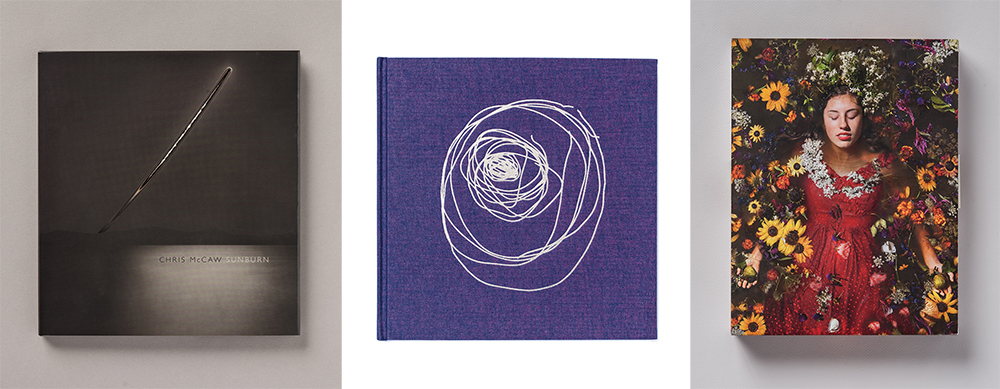
©Candela. Sunburn by Chris McCaw (out of print), Pine Tree Ballads by Paul Thulin, 100 Views of the Drowning World by Kahn and Selesnick (out of print).
Are there any publishing projects that have been particularly meaningful to you?
I cannot single out a project, so I will make the calculated choice to single out our most recent project, Dr. Falke’s ORACULUM, by Kahn & Selesnick.
This is our second title from this collaborative team. The creativity and prodigious output from Nicholas (Kahn) and Richard (Selsenick) is simultaneously surprising and original. These two do not really confine themselves to photography specifically, and so our current book release exhibition is a crowded (even chaotic) collection of drawings, large scale paintings, sculptural works and photographs all meant to elucidate the book, a collection of auguries and divinations, as well as images which depict the performance of each given ritual.
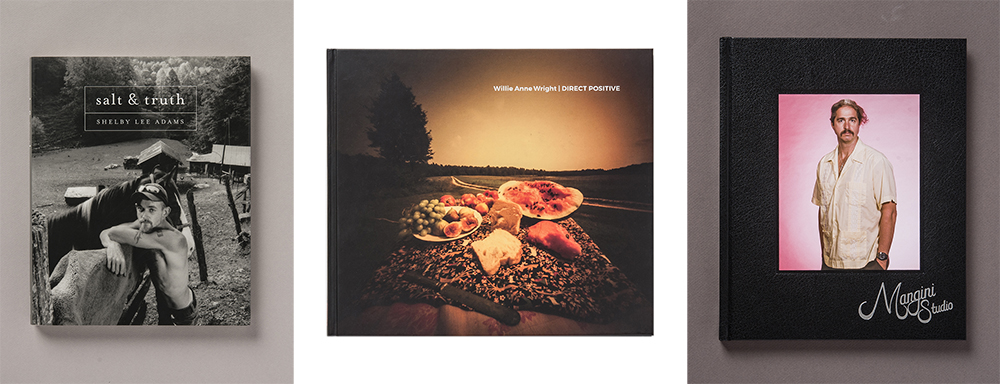
©Candela. Salt & Truth by Shelby Lee Adams, Direct Positive by Willie Anne Wright, Mangini Studio by Terry Brown & Gordon Stettinius.
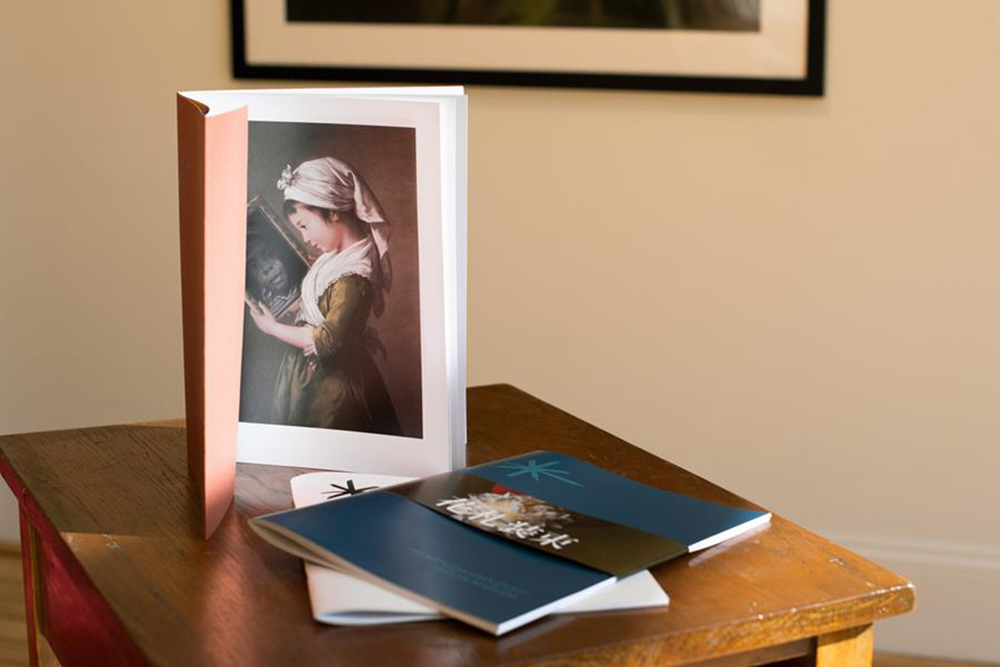
©Candela. Exhibition catalogs, including, Gary Burnley’s Stranger in the Village and Shinya Masuda’s Hanafuda Shouzoku.
What upcoming projects are you excited about?
I am in discussions with a couple of different artists at present and am sorely tempted by a couple of other proposals I’ve received in recent months. I will be committing to something soon since we have just released the current project.
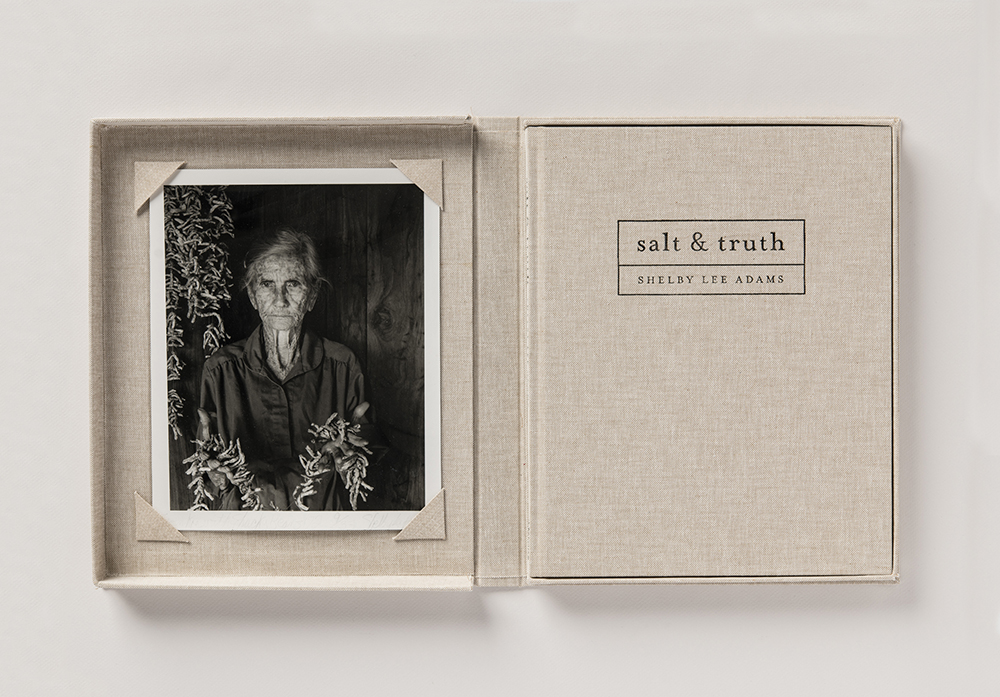
©Candela. Limited Edition of Salt & Truth by Shelby Lee Adams, with an 8”x10” gelatin silver photograph, Frankie with Shucky Beans, 2002.
How many books do you publish a year, and how do you choose which projects to publish? Do you have a specific focus?
To date, we have only released a book or two a year. During the pandemic, we did start producing catalogs of our exhibitions because, honestly, not enough people were getting to see these exhibitions in person. Even the artists were not always able to see their own exhibition, so the catalogs reached more people than did the exhibitions.
How can an artist get their work in front of you? Do you have any advice for photographers? What is the typical timeline of a project, from the beginning to the finished product?
An email of introduction is generally well received. But even as a smaller, independent publisher we get a fairly overwhelming number of submissions/queries. So, the odds are a bit against you if you are just cold calling us. There is a relationship aspect to working with artists on a major project and for us part of that relationship also includes the gallery. So, the objects and their audience come into play. I have declined to do some really interesting book projects because I just couldn’t wrap my mind around how the work would do in the gallery context. I will probably make exceptions to this condition over time but so far, the books have been a compliment to the gallery programing.
We will also turn up at most of the major portfolio reviews and try to be available/approachable when people make the effort to visit our gallery.
Your Unbound open calls include books. Can you talk about how you see displaying books in the context of exhibitions?
Each year, we have been getting more and more book submissions to our annual Unbound! exhibition. This past year, we included about 12-14 books and artist books. And we usually acquire a few of these for our permanent collection as well. The books function beautifully in the context of an exhibition. The main concern for us is when a book is unique, especially if it is at all delicate. When a book is produced in a generous number, then we can have it on a table or pedestal and allow people to engage with it. When a book is vulnerable to too much handling, we have to keep it behind glass and give it more of a white glove treatment.
The frustrating thing about having the books is that they don’t command as much attention as the works on the walls. Even when they may have so much more to offer. But every year, we do have a smaller, more thoughtful, contingent of book nerds who will spend a lot of time with the works. And we do manage to find a new home, in different special collections, for some of these very insistent, compelling artists’ books.
How collaborative is the design process with the artist?
When we establish a mutual interest in working together with a given artist, the first discussion really is what does their ideal book look like. The more involvement an artist has, the more satisfied they will feel with the end product. Some conversations end by each of us realizing that we are not well matched. The breakdown may come from a difference in aesthetic ideas, or in the marketing, or limitations in our distribution or…
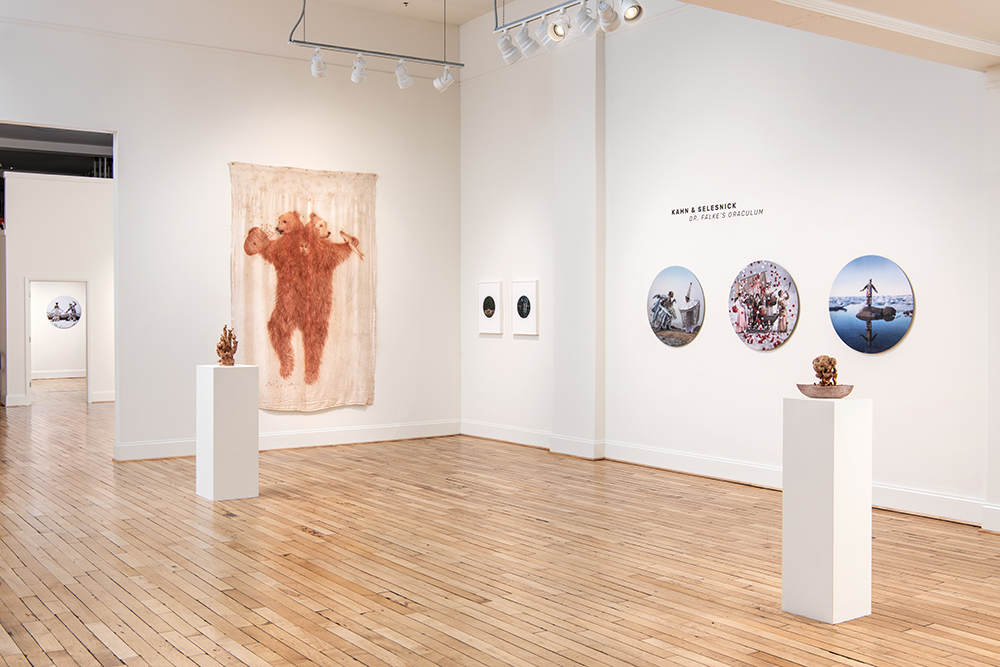
©Candela. Installation from current book release exhibition of Dr. Falke’s ORACULUM by Kahn & Selesnick.
How is the financial side of the project structured between publisher and artist? Does the artist contribute to production cost?
We have done a few different things from assuming all the financial risk to partnering equally with an artist. And we’ve used a few different strategies to bring some money in early in the process:
• subsidizing costs by pre-selling books through an artist’s galleries
• we’ve had some success offering limited/special editions
• crowdsourcing using a platform such as Kickstarter

©Candela. Low Mileage Elder, Gordon Stettinius, nursing Candela’s disco ball through another event, Bring A Date, 2019.
What support do you give artists in terms of marketing or distribution? Do you attend book fairs?
Depending upon the book, we have had distribution with Artbook | DAP for most of our titles. In a few instances we have handled distribution ourselves and depending upon the situation, we have had to adjust the size of our print runs to reflect the reach we expect to have. Using Kahn & Selesnick as an example again, the two K&S books we have published have been unbound, and were deemed by our distributor as a bit unusual for conventional distribution. But these artists are so active and busy with exhibitions, plus their audience is so well established that we have done really well. We completely sold out their first title in just over two years and, so far, we have sold over a third of the recent books’s print run in just a couple of months.
As for book fairs, I am looking forward to venturing out into the world again. We don’t hit every fair because we are trying to keep the gallery front and center but book fairs have been really good to us. And it is a fun crowd with which to mix it up. Of course, the profits get chipped away at because I generally come home with too many books for myself.
Posts on Lenscratch may not be reproduced without the permission of the Lenscratch staff and the photographer.
Recommended
-
Publisher’s Spotlight: Smog PressJanuary 3rd, 2024
-
Publisher’s Spotlight: Kult BooksNovember 10th, 2023
-
Publisher’s Spotlight: ‘cademy BooksJune 25th, 2023
-
Publisher’s Spotlight: Brown Owl PressDecember 10th, 2022
-
Publisher’s Spotlight: DOOKSSeptember 26th, 2022

